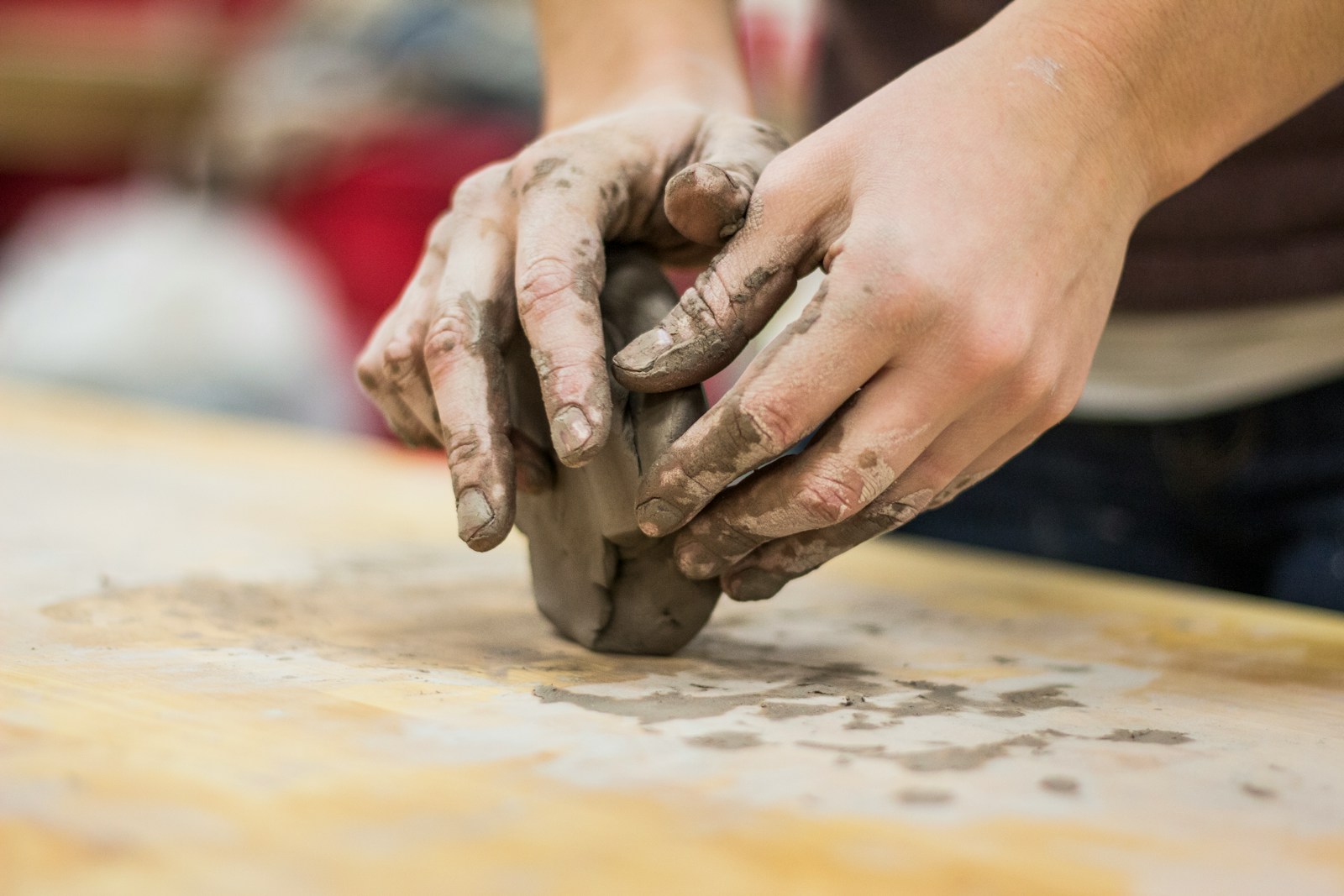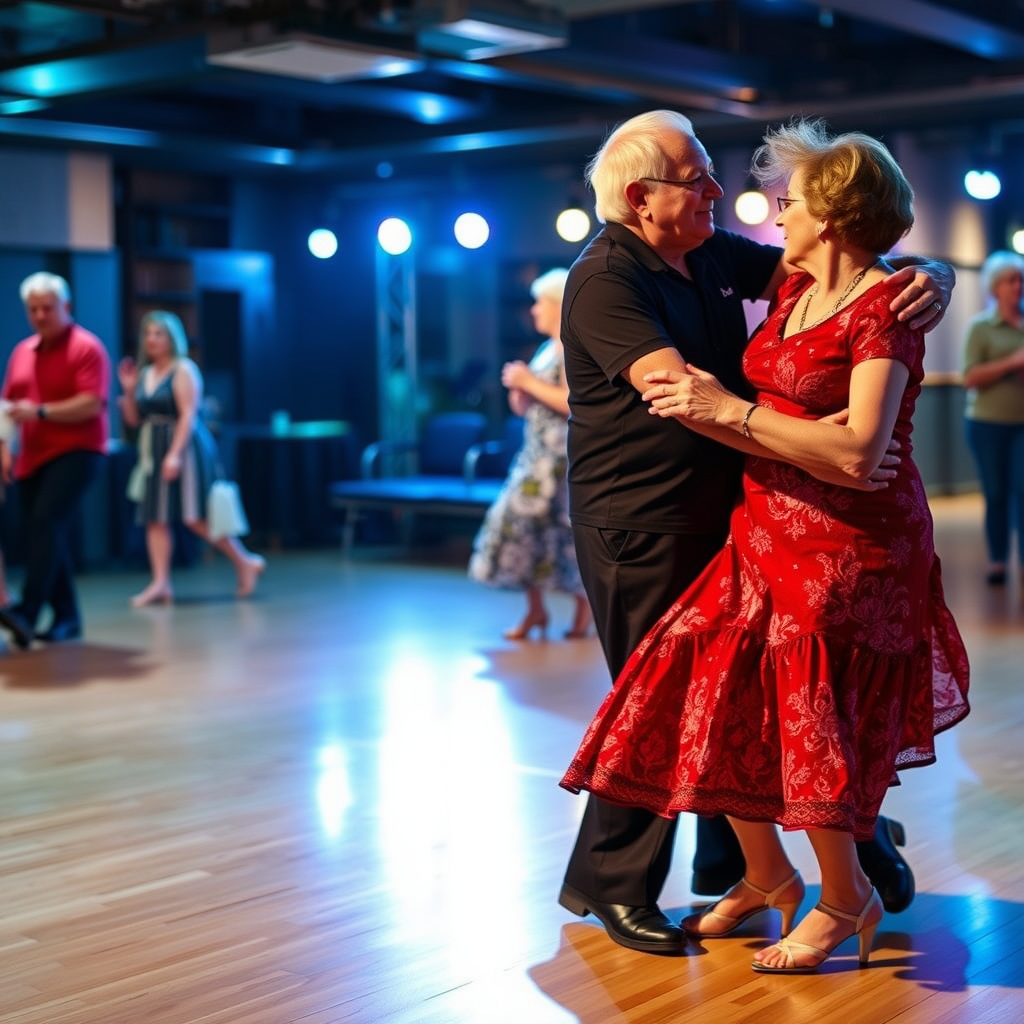Senior-Friendly Arts and Culture Events in the GTA: A Comprehensive Overview
The Greater Toronto Area (GTA) is a vibrant hub for arts and culture, offering numerous events that cater to seniors. With a focus on accessibility and engagement, many organizations have made efforts to ensure that their offerings are senior-friendly. Whether you enjoy visual arts, music, or theater, there’s something in the GTA for you. Here’s a closer look at some options available to seniors.
Visual Arts Exhibitions
Art galleries across the GTA frequently host exhibitions that appeal to senior audiences. Notable venues include:
- The Art Gallery of Ontario (AGO): The AGO offers free admission on Wednesday evenings and has special exhibitions featuring both historical and contemporary art. Members also enjoy discounted workshops aimed at fostering creative expression.
- The Museum of Contemporary Art (MOCA): MOCA hosts senior-friendly guided tours that cater to the interests of older adults. These tours are often designed with a slower pace, allowing ample time to appreciate the art.
- Toronto’s Distillery District: This area is known for its art galleries showcasing local artists. Many galleries offer weekend events including art walks that are perfect for seniors wanting to explore at their leisure.
Performing Arts Events
The performing arts scene in the GTA is equally engaging. Seniors can attend various events that offer both entertainment and accessibility:
- Royal Ontario Museum (ROM): The ROM often features lectures and performances related to its exhibits. These events are designed with seniors in mind, providing comfortable seating and easy access.
- The Canadian Stage: Featuring a variety of performances ranging from classic plays to contemporary works, this venue offers discount tickets for seniors. Additionally, it hosts afternoon matinees, perfect for those preferring to avoid evening outings.
- Toronto Symphony Orchestra (TSO): For music lovers, the TSO offers various concerts specifically tailored for seniors, including afternoon performances with discounted tickets to ensure affordability.
Cultural Festivals
Throughout the year, the GTA hosts numerous cultural festivals that celebrate diversity and inclusion. Here are a few highlights:
- Toronto International Film Festival (TIFF): Seniors can enjoy special screenings and Q&A sessions with filmmakers. TIFF often provides senior discounts on tickets as well.
- Word on the Street Festival: This literacy-focused festival features author readings, live music, and workshops. It’s a great way for seniors to engage with literature and meet authors in a friendly environment.
- TD Toronto Jazz Festival: A perfect way to enjoy live music, this annual festival features numerous outdoor performances, which are often free and easily accessible to seniors.
Workshops and Classes
Hands-on experiences like workshops encourage creativity and social interaction. Many organizations offer classes tailored for seniors:
- Seniors Arts and Culture Program: This initiative hosts regular workshops across various art forms, including painting, pottery, and dance. Activities are intentionally designed for seniors to foster both creativity and camaraderie.
- Community Centers: Local community centers often provide arts and culture programs focused on skills development, such as writing and photography. Classes are conducive to seniors and provide a platform for expressing creativity.
In addition to specific events, many cultural institutions in the GTA offer accessibility options. These include wheelchair access, assistive listening devices, and guided tours. Local transit works towards ensuring seniors can easily access events, with discounts available on regional transportation services.
By participating in these arts and culture events, seniors not only gain access to enriching experiences but also foster connections within their communities. So, whether you’re an art aficionado, a music lover, or just looking to explore new interests, there’s no shortage of senior-friendly events in the vibrant GTA. Engage, enjoy, and experience the rich cultural landscape Toronto has to offer!
Accessibility Features of Local Art Venues for Seniors
In the Greater Toronto Area (GTA), art venues play a crucial role in enriching the lives of seniors. These venues are increasingly recognizing the need for accessibility, ensuring that everyone can enjoy cultural experiences regardless of physical challenges. Accessibility features are thoughtfully integrated into local galleries, theaters, and museums, creating a welcoming environment for seniors. Understanding these features can help you or a loved one take full advantage of the vibrant arts scene in Toronto.
Wheelchair Accessibility
Many art venues in the GTA prioritize wheelchair accessibility by providing:
- Ramps: Smooth ramps allow easy entry and exit for those using wheelchairs or mobility aids.
- Elevators: Multi-story venues often feature elevators, making it simple to navigate between floors.
- Spacious Aisles: Galleries and theaters ensure that paths within the venue are wide enough to accommodate wheelchairs comfortably.
Accessible Seating Options
Comfortable seating is essential for a positive experience. Here’s how venues make seating accessible:
- Designated Seating: Many theaters and performance spaces allocate special seating for seniors and individuals with disabilities, ensuring easy access to the stage and ample legroom.
- Companion Seats: Seats are often available for companions, allowing seniors to enjoy performances with friends or family.
- Accessible Viewing Areas: Some venues provide dedicated viewing areas for those who may need space for mobility devices.
Hearing and Visual Assistance
For seniors with hearing or vision impairments, art venues offer various assistance options:
- Assistive Listening Devices: Many theaters provide audio devices that enhance sound for those who are hard of hearing.
- Subtitles and Captions: Screenings and live performances may include subtitles or captions, making it easier to follow along.
- Large Print Materials: Brochures and event programs can often be requested in large print, ensuring they are readable.
Guided Tours and Workshops
Many local art venues also offer special guided tours and workshops designed with seniors in mind. These often include:
- Programmed Events: Some galleries and museums schedule tours that cater specifically to seniors, often taking their pace into account.
- Interactive Workshops: Hands-on art workshops encourage creativity while focusing on accessibility, such as using materials that are easy to handle.
- Experienced Guides: Guides with training in assisting seniors ensure that all participants feel comfortable and included.
Transportation Options
Accessibility doesn’t end at the venue. Many art venues are connected with transportation services that cater specifically to seniors:
- Accessible Public Transit: The TTC (Toronto Transit Commission) offers accessible buses and subway stations to help seniors navigate the city.
- Shuttle Services: Some venues provide shuttle services for seniors from central locations, making attendance easier.
- Partnerships with Ride Services: Many venues have partnered with ride services that offer discounts or reliable options for seniors.
Virtual Events
Seniors who prefer to enjoy arts and culture from the comfort of their homes are often accommodated by:
- Live Streaming: Many theaters provide live-streamed performances, allowing seniors to enjoy shows without traveling.
- Online Exhibits: Museums frequently feature virtual tours and online galleries that can be navigated easily.
- Interactive Art Classes: Some venues offer virtual classes that provide the materials in advance, allowing seniors to participate actively from home.
As you explore the rich cultural offerings in the GTA, remember that accessibility is a fundamental aspect of the experience. Whether you’re interested in visual arts, theater, or interactive workshops, local venues are dedicated to ensuring that every individual, especially seniors, can participate fully. Make use of the resources available to you and enjoy the vibrant arts scene that thriving cities like Toronto have to offer.
Engaging Senior Communities Through Cultural Experiences
Engaging senior communities through cultural experiences is an essential way to foster connection, creativity, and well-being. In Toronto and the Greater Toronto Area (GTA), there’s a rich array of arts and culture events tailored specifically for seniors. These activities can make a significant impact on their social lives and mental health, encouraging participation and enriching their daily experiences.
Many local arts organizations focus on creating environments that are accessible and enjoyable for older adults. Here are some ways these cultural experiences benefit seniors:
- Social Interaction: Attending events allows seniors to meet new people, engage in conversations, and build friendships. This socialization is crucial for combating loneliness.
- Cognitive Engagement: Participation in arts and culture activates the mind. Activities like painting, music, and theater stimulate creativity and critical thinking.
- Physical Activity: Many cultural events incorporate movement, whether it’s dancing at a community festival or walking through an outdoor art exhibition. Keeping active is vital for physical health.
- Emotional Health: Engaging with the arts can evoke emotions, helping seniors express themselves and process their feelings. This emotional connection can lead to improved mood and a sense of fulfillment.
In the GTA, several organizations and events stand out for their commitment to meeting the needs of seniors. Here are some of them:
Art Gallery of Ontario (AGO): The AGO frequently hosts special programs for seniors, including guided tours and workshops. There are often sessions that allow seniors to explore art history or create their own pieces in a relaxed setting.
The Toronto Symphony Orchestra (TSO): The TSO offers senior-friendly concerts, often with discount tickets. Their “Casual Fridays” feature a more relaxed atmosphere for seniors to enjoy classical music without the usual formalities.
Festivals and Community Arts: Throughout the year, various cultural festivals happen in the GTA, such as the Toronto International Film Festival (TIFF) and Caribana. Many of these festivals include days or times specifically tailored for seniors, with accessible venues, transportation assistance, and engaging activities.
Additionally, community centers in the GTA play a key role in creating arts events for seniors. They offer classes in painting, pottery, and creative writing. Here’s a list of ways community centers engage seniors:
- Organizing local art exhibitions that showcase the work of seniors.
- Offering regular music and dance classes designed for different skill levels.
- Hosting storytelling events where seniors can share their life experiences, enhancing both listening and verbal skills.
Accessibility is a key consideration when planning cultural events for seniors. Here are ways to ensure these experiences are accommodating:
- Providing transportation assistance or shuttles to venues.
- Ensuring locations are wheelchair accessible and have appropriate seating arrangements.
- Offering flexible scheduling to suit varying energy levels, such as morning or afternoon events.
Furthermore, engaging with technology can enhance cultural experiences for seniors. Virtual events and online classes have become increasingly popular, especially after the pandemic. Seniors can enjoy art exhibits from their homes, join webinar discussions, or attend virtual concerts. This accessibility opens up numerous opportunities for those who might have transportation challenges or mobility issues.
For families and caregivers looking to enhance the lives of seniors, it’s important to encourage participation in these activities. Attending an art class, going to a concert, or volunteering at community events will not only benefit seniors but also create bonding experiences with loved ones.
Collectively, arts and culture events in the GTA provide a robust framework for engaging senior communities. With numerous benefits ranging from social connections to cognitive stimulation, these experiences can significantly enhance quality of life. Whether through local galleries, theaters, festivals, or community centers, there are endless opportunities for seniors to explore the rich tapestry of culture while connecting with others. It’s essential for planners and community members alike to prioritize these activities and ensure they remain accessible, inviting, and enjoyable for everyone involved.
Upcoming Exhibitions and Performances Tailored for Older Audiences
For seniors looking for enriching experiences, the Greater Toronto Area (GTA) is bursting with exciting arts and culture events tailored just for you. Here are some upcoming exhibitions and performances that promise to engage, entertain, and inspire older audiences. From art exhibitions to theater performances, there’s truly something for everyone.
Art Exhibits That Appeal to the Older Generation
Art exhibits provide a wonderful opportunity to immerse yourself in creativity and culture. Here are a few highlights in the GTA:
- Gallery 44 – Photographs in Perspective: This exhibition will explore the world through the lens of established and emerging photographers. With a focus on narratives that resonate with older experiences, the exhibit runs from September to November.
- Art Gallery of Ontario – Masterpieces of Impressionism: A traveling collection featuring renowned Impressionist artists is making a stop in Toronto. The exhibit offers guided tours that accommodate seniors, ensuring everyone can appreciate the masterful brushstrokes.
- Toronto Reference Library – Local Art Showcase: This ongoing exhibition features works by local senior artists. Visit to support these creators and see how age enhances creativity.
Theater Performances Perfect for Seniors
Theater is another compelling way to experience the arts. Upcoming performances in the GTA cater to a wide range of interests:
- Mirvish Productions – Classic Musicals: The Mirvish team is bringing back some classic musicals which have captivated audiences for generations. Shows like “The Sound of Music” and “Les Misérables” are bound to evoke nostalgia.
- The Shaw Festival – Period Dramas: This acclaimed festival has a range of plays set in different eras, showcasing themes that resonate with older audiences. Performances run from May to October, so plan ahead!
- Factory Theatre – Dramatic Readings for Seniors: Join this interactive series of readings happening twice a month where seniors can engage directly with the story and share their thoughts.
Music and Dance Events to Enjoy
If music is more your style, the GTA offers an array of concerts and dance performances that are senior-friendly:
- Toronto Symphony Orchestra – Seniors’ Concert Series: These special concerts are designed with older adults in mind, showcasing timeless classics paired with insightful commentary. Discounts are available for seniors.
- Harbourfront Centre – Summer Dance Series: Enjoy vibrant performances in a scenic waterfront setting. All ages are welcome, and the atmosphere is sure to uplift your spirits.
- Live Jazz Nights at Local Cafés: Many neighborhoods in the GTA host cozy jazz nights where you can relax with a glass of wine or a warm cup of tea, all while enjoying live music.
Special Community Events
In addition to art shows and performances, community events foster social connections and cultural engagement:
- New Horizons Seniors Expo: Scheduled for October, this expo features workshops, talks, and performances tailored specifically for seniors. This is a great way to meet people while learning about local arts and culture.
- Community Theaters – Open Mic Nights: Many community theaters host open mic events for seniors to showcase their talents or simply enjoy a night of entertainment provided by fellow community members.
- Toronto Arts Council – Free Public Workshops: Check out the schedule for free workshops focused on visual arts, music, and drama where you can explore your creativity among peers.
Whether you’re interested in visual arts, performance, or engaging community events, the Greater Toronto Area offers a vibrant array of options for older adults. Make sure to check individual venues for specific accessibility options and senior discounts. With so many enriching experiences available, there’s no shortage of ways to enjoy the arts and culture scene in the GTA!
The Benefits of Arts and Culture Participation for Senior Well-being
Engaging in arts and culture activities can significantly enhance the well-being of seniors. As individuals age, maintaining mental, emotional, and social health becomes crucial. Arts and culture participation offers a variety of benefits that can help meet these needs. Here are several ways seniors can gain from such experiences.
Emotional Well-being
Arts and culture provide a powerful outlet for self-expression. Creative activities, whether it’s painting, dancing, or music, allow seniors to share their feelings and experiences. This form of expression can lead to:
- Increased happiness: Participating in enjoyable activities boosts mood and creates a sense of joy.
- Stress relief: Engaging in creative tasks can significantly reduce anxiety and tension.
- A sense of achievement: Completing an artistic project fosters confidence and accomplishment.
Social Connections
Participating in arts and culture events encourages social interaction. This is essential for seniors, as social connections help ward off feelings of loneliness. Many local organizations offer group activities, providing seniors the opportunity to meet new people with similar interests.
- Friendship formation: Shared experiences can lead to lasting friendships.
- Community belonging: Feeling part of a group fosters a stable sense of belonging.
- Network building: Engaging in community events can expand your social circle.
Cognitive Enhancement
Participation in arts and culture stimulates cognitive functions. Activities that involve learning new skills or techniques keep the brain active and sharp. Here are a few aspects where cognitive enhancement through arts and culture shows strong effects:
- Memory improvement: Engaging in creative activities can enhance memory retention and recall.
- Increased focus: Concentrating on artistic projects enhances attention span and focus levels.
- Problem-solving skills: Arts often involve planning and troubleshooting, improving creative problem-solving abilities.
Physical Activity
Participating in cultural events often involves physical movement, be it through dance, theatre performances, or art classes that require mobility. Regular movement is vital for seniors to maintain their physical health. Here’s how it helps:
- Improved mobility: Activities promote physical wellness and can aid in muscle strength and balance.
- Increased energy levels: Regular physical activity boosts overall energy and vitality.
- Better coordination: Engaging in arts and crafts enhances motor skills and coordination.
Positive Life Perception
Engaging in arts and culture can help seniors develop a more positive outlook on life. The joy derived from these activities allows for a deeper appreciation of their experiences. Here are some benefits regarding life perception:
- Enhanced optimism: Creative pursuits encourage a hopeful mindset.
- Resilience: Arts can provide a coping mechanism during difficult times, promoting emotional resilience.
- A sense of purpose: Participating in meaningful activities fosters a greater sense of purpose in life.
Community Engagement
Arts and culture events often reflect local heritage and community efforts. Seniors participating in these activities can enhance their knowledge about their surroundings and culture. Benefits include:
- Cultural appreciation: Gaining insight into local arts fosters a deeper appreciation of one’s culture and history.
- Volunteering opportunities: Joining community art projects allows seniors to contribute and give back.
- Education: Exposure to various art forms broadens horizons and increases cultural literacy.
Arts and culture into daily life is essential for seniors seeking to boost their overall well-being. By participating in these enriching experiences, seniors can find joy, connection, and a renewed sense of purpose, ultimately enhancing their quality of life. Whether it is through a local art class, participating in community theatre, or simply visiting a gallery, the opportunities are plentiful in the vibrant arts scene available today.
Conclusion
As we explore the vibrant landscape of senior-friendly arts and culture events in the Greater Toronto Area (GTA), it becomes clear that these experiences play a vital role in enriching the lives of older adults. The comprehensive overview of events tailored specifically for seniors highlights not only the variety available but also the thoughtful consideration given to accessibility. Many local art venues are equipped with features that make it easier for seniors to engage fully with exhibitions and performances, ensuring that art remains an inclusive space for everyone.
By actively involving senior communities in cultural experiences, we foster connections and create opportunities for engagement, learning, and enjoyment. Upcoming exhibitions and performances scheduled with older audiences in mind promise to deliver both captivating content and an inviting atmosphere for participation.
Moreover, the benefits of arts and culture participation extend beyond mere enjoyment—they significantly contribute to the well-being of seniors. Engaging with the arts stimulates mental and emotional health, encourages social interaction, and fuels personal expression. As seniors immerse themselves in these rich cultural environments, they not only enhance their quality of life but also enrich the broader community.
Whether you’re a senior looking for your next cultural outing or a caregiver seeking opportunities for engagement, the GTA offers a wealth of possibilities. Embrace the arts and culture events that await you, and discover the joy and fulfillment they bring to your life. By participating in these enriching experiences, you join a vibrant community that celebrates creativity and connection at every age.









